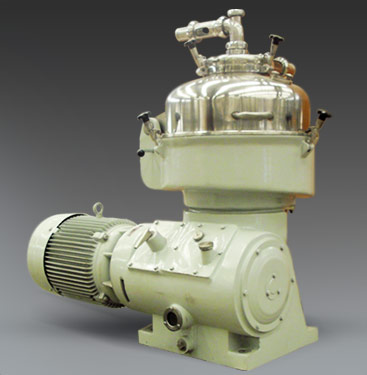Disc Separator

Applications:
- Starch and gluten separation in corn starch line
- Gluten concentration in corn starch line
- A and B-starch separation in wheat starch line
- B-starch concentration in wheat starch line
- Starch concentration in wheat, potato and cassava starch line
Features and benefits:
- Compact design and small required area for installation
- Easy to operate and control
- Improves starch yield
- Diverse applications
- High final product quality
- Less starch in waste water
Description:
A disc stack centrifuge ( Disc Separator) separates solids and one or two liquid phases from each other in one single continuous process, using extremely high centrifugal forces. When the denser solids are subjected to such forces, they are forced outwards against the rotating bowl wall, while the less dense liquid phases form concentric inner layers. The area where these two different liquid phases meet is called the interface position. This can be easily varied in order to ensure that the separation takes place with maximum efficiency.
Inserting special plates (the “disc stack”) provides additional surface settling area, which contributes to speeding up the separation process dramatically. It is the particular configuration, shape and design of these plates that make it possible for a disc stack centrifuge to undertake the continuous separation of a wide range of different solids from either one or two liquids. The concentrated solids phase formed by the particles can be removed continuously, intermittently or manually, depending on centrifuge type and the amount of solids involved in the specific application.
The clarified liquid phase overflows close to the rotating axis, in the outlet area on top of the bowl. The liquids then flow into separate chambers. Each separated liquid phase then leaves the bowl due to the force of gravity or by means of a paring disc, which is a special pumping device. The chambers can be sealed off from each other to prevent any risk of cross-contamination.

 What our Customers say
What our Customers say






